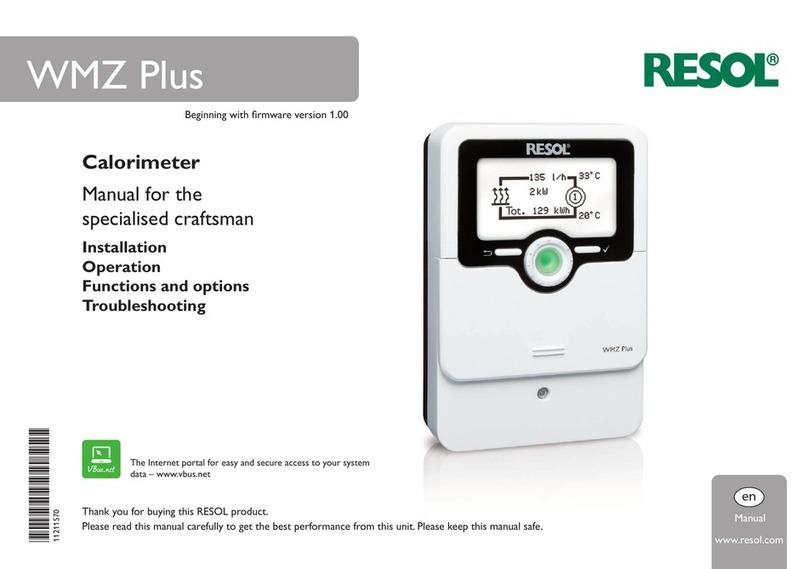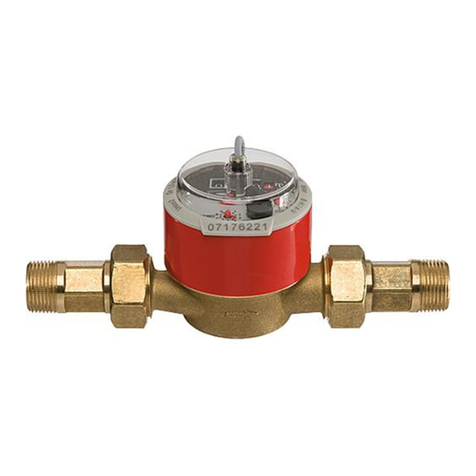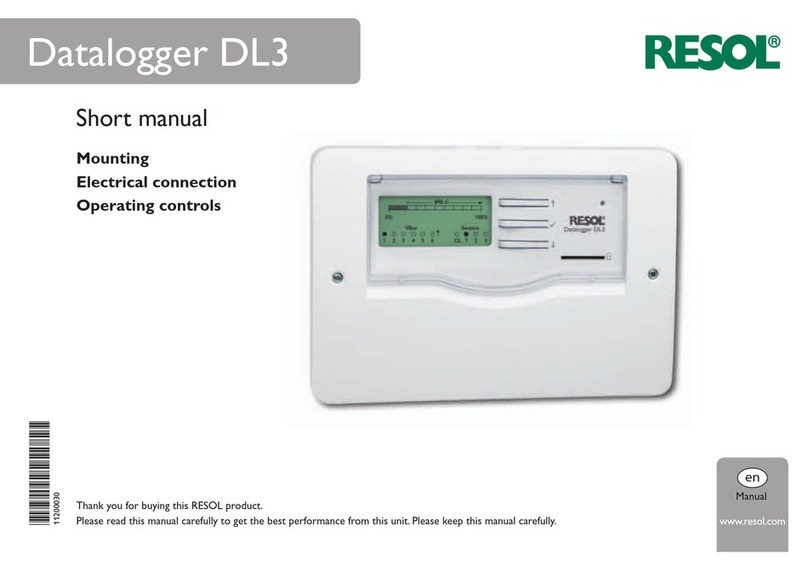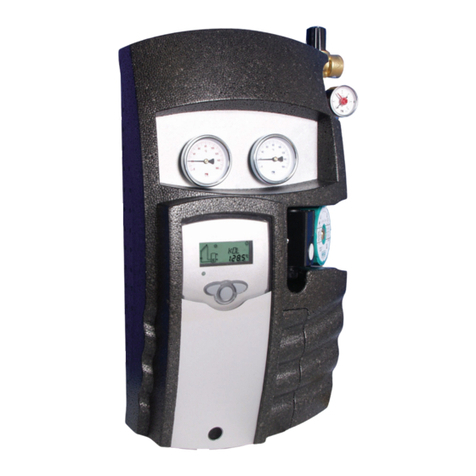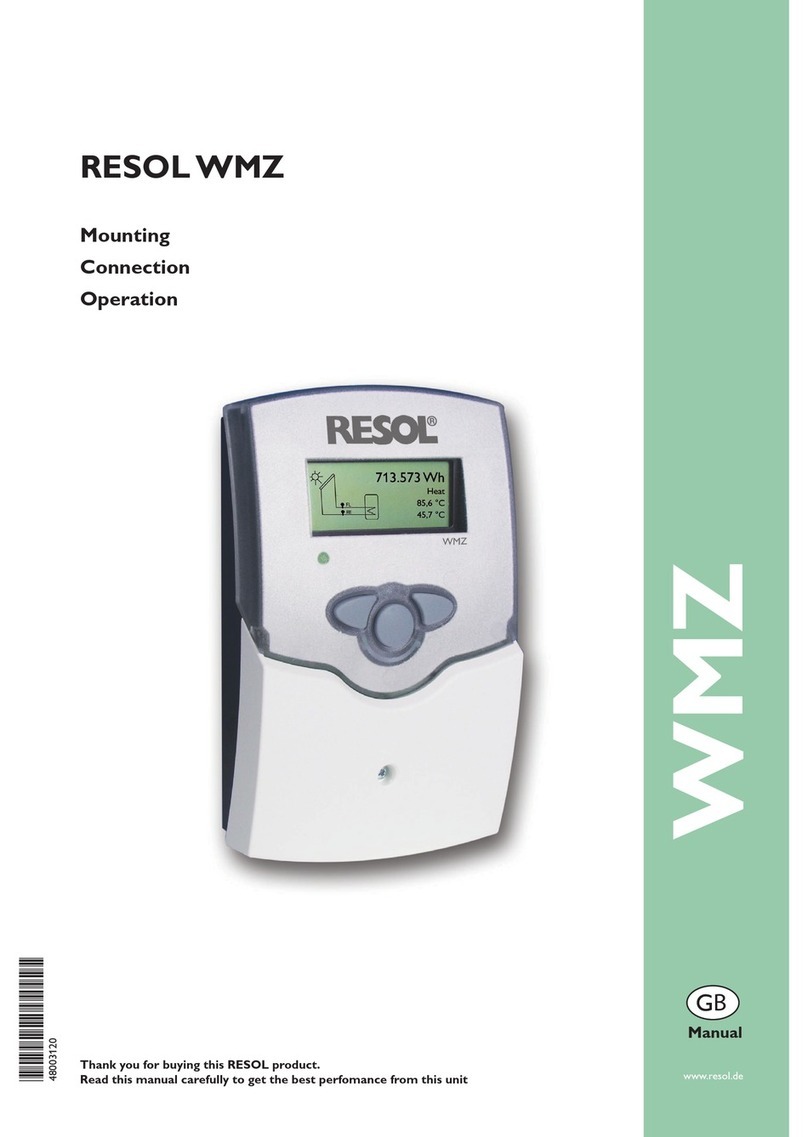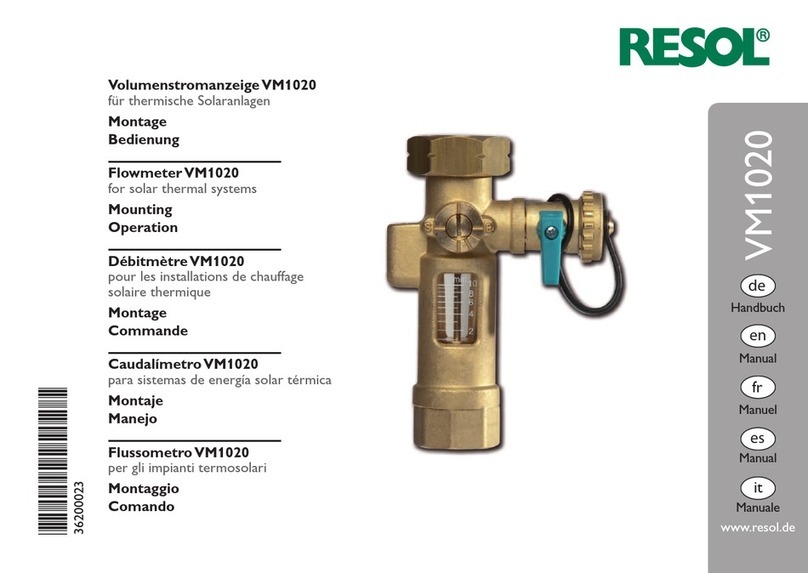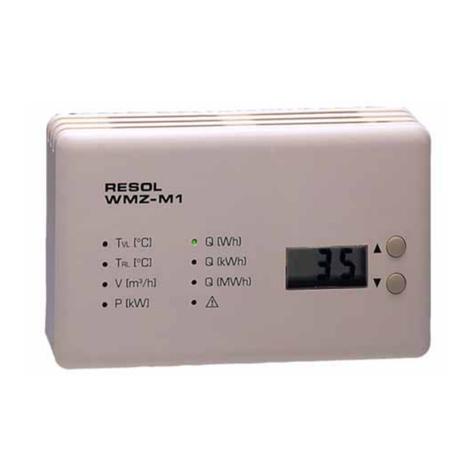
10
en
Adjust the parameters referring to temperature (signal 1):
Adj. values:
Temperature
unit °C
offset 0,0 °C
• Unit:
Select the unit of temperature.A selection can be made between °C and °F.
• Offset:
A sensor offset can be carried out.
Adjustment range: -99,9 … 99,9 °C or °F
min alarm yes
min 0,0 ° C
max alarm yes
max 100,0 ° C
• Min Alarm:
If the minimum temperature is reached, the relay is energised, ⚠appears in the
display, the LED ashes green and an alarm message appears in the submenu “Re-
ports”.
ÎSelect “Yes” or “No” to activate or deactivate the function.
If this function is selected, the minimum value for the alarm has to be adjusted.
Adjustment range: -888,8 … 999,9 °C or °F.
• Max Alarm:
If the maximum temperature is reached, the relay is energised, ⚠appears in the
display, the LED ashes green and an alarm message appears in the submenu “Re-
ports”.
ÎSelect “Yes” or “No” to activate or deactivate the function.
If this function is selected, the maximum value for the alarm has to be adjusted.
Adjustment range: -888,8 … 999,9 °C or °F.
Signal 2
Adjust the parameters and values for the second sensor signal.The second signal of
each sensor depends on the sensor type.Therefore, the following parameters and
adjustment values depend on the sensor type (ow rate for VFS, pressure for RPS,
differential pressure for DPS)
Adj. values:
flow rate
unit l/min
offset 0,0 L/min
Adjust the parameters referring to the ow rate (signal 2) if a VFS is used:
• Unit: Select the unit of ow rate.
A selection can be made between l/min, m³/h and gallon/h.
• Offset: An offset can be carried out.The adjustment range depends on the
previously selected unit.
min alarm yes
min 0,0 l/min
max alarm yes
max 100,0 L/MIN
• Min Alarm:
If the minimum ow rate is reached, the relay is energised, ⚠appears in the display,
the LED ashes green and an alarm message appears in the submenu “Reports”.
ÎSelect “Yes” or “No” to activate or deactivate the function.
If this function is selected, the minimum value for the alarm has to be adjusted.The
adjustment range depends on the previously selected unit.
• Max Alarm:
If the maximum ow rate is reached, the relay is energised, ⚠appears in the display,
the LED ashes green and an alarm message appears in the submenu “Reports”.
ÎSelect “Yes” or “No” to activate or deactivate the function.
If this function is selected, the maximum value for the alarm has to be adjusted.The
adjustment range depends on the previously selected unit.
Adjust the parameters referring to relative pressure (signal 2) if a RPS is used:
Adj. values:
Pressure
Offset 0,00 BAR
Min Alarm nO
• Offset:
An offset can be carried out.
Adjustment range: 0 … 99,99 bar












